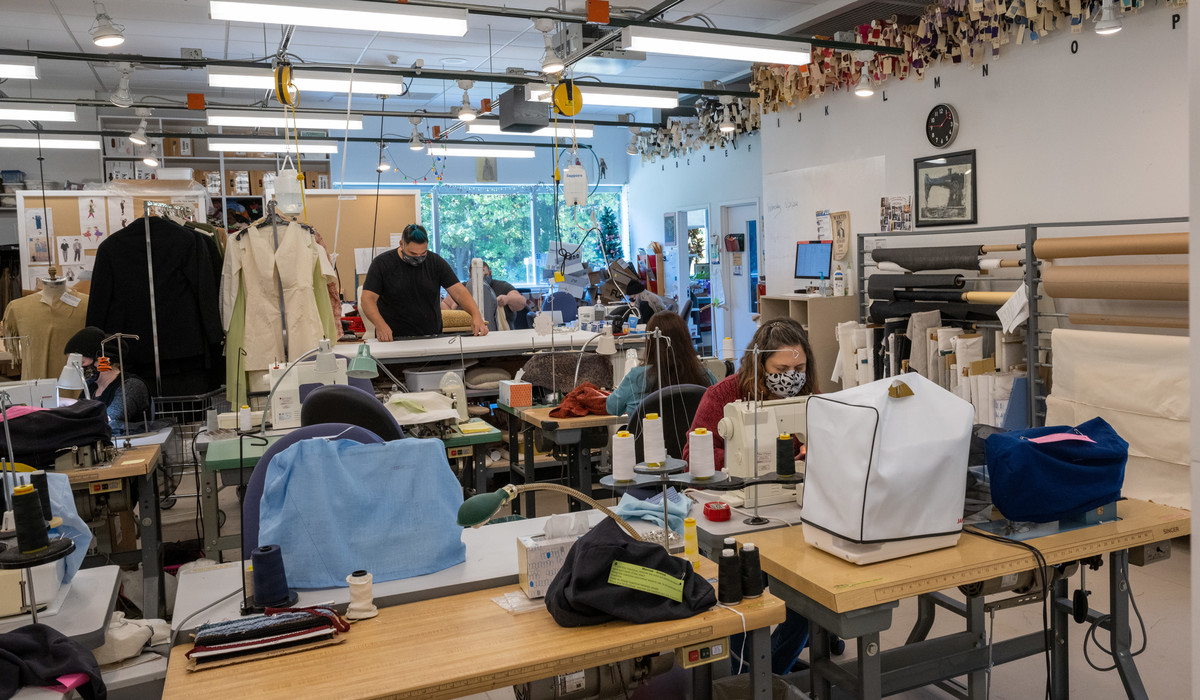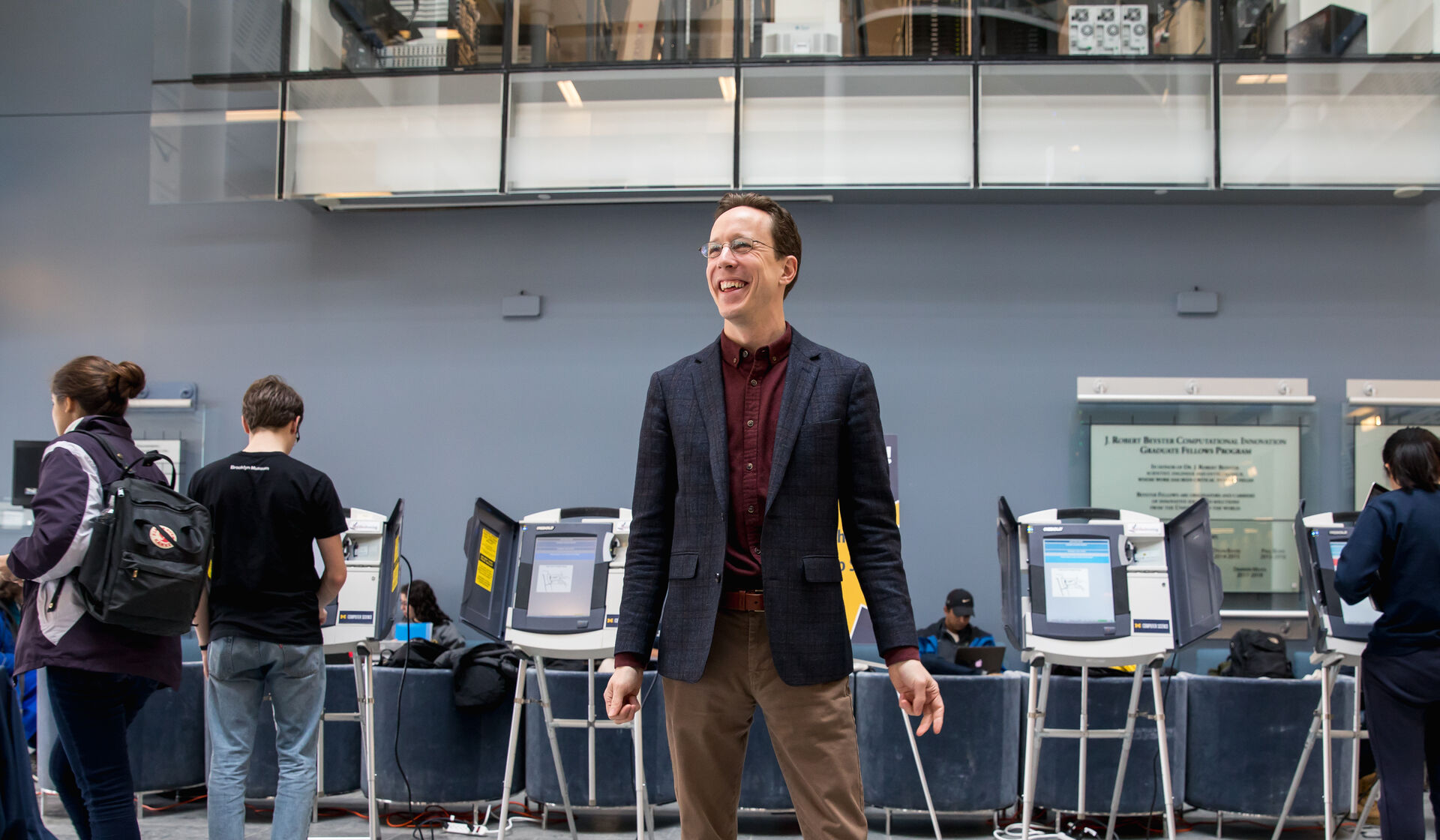Sewing machines hum while student actors come and go from private fitting rooms. Meanwhile, drapers sit at pneumatic tables, moving them up and down to accommodate cutting and draping. And in a separate room to isolate fumes, large pieces of fabric undergo a color change in a 50-gallon kettle of boiling water; a stove suffices for smaller dye jobs. The sights and sounds of the School of Music, Theatre & Dance’s costume shop are positively energizing.
Christianne Myers, a costume designer and interim chair of the Department of Theatre & Drama, says it’s a joy to be in a space that was designed for its function. Architects consulted staffers and faculty costume designers before completing plans for the shop, which opened on the second floor of the Walgreen Drama Center in 2006. The nine staffers and four to six students who work in the shop appreciate the natural light.
“Often,” Myers says, “costume shops are stuck in the basement.” And some theaters, even some professional theaters, don’t have any costume shop at all.
It’s not unusual for the shop—which serves theater, musical theater, opera, and dance for the University Productions department—to work on three to four shows at once. Laura Brinker, costume shop manager, says that shops at many universities have just one or two staffers. Sometimes, students make every costume, occasionally working through the night to make deadlines. At U-M, supervised students supplement the staff for pay or class credit.
Justin Collings, one of four drapers, explains that his job is to translate designs into patterns, either on paper or by draping fabric on a mannequin. Drapers then cut the fabric and handle alterations. Additionally, Collings guides costume design students to appropriate fabrics and acting students to understand what a good fit is “to prepare them for the professional world.”
Elizabeth Gunderson, the crafts artisan who oversees accessories, browses hardware stores as well as fabric stores. “Sometimes, I dirty a costume or paint blood on it,” she says. “A lot of times, I use materials in ways they were not meant to be used.” Once, for instance, that creativity led her to make armor out of a bamboo placemat.
Other staff includes a stitcher, a wardrobe supervisor, and a stock manager who helps designers find costumes at a separate, off-campus facility in Ann Arbor, gets these costumes to the theaters, and handles rentals to other theaters.
“I don’t think students realize what an amazing facility it is,” says Myers. “Alums call to say, ‘I didn’t know we had it so good.’”
Is there a U-M space that you’d like to learn more about? Email [email protected] with your suggestion.





